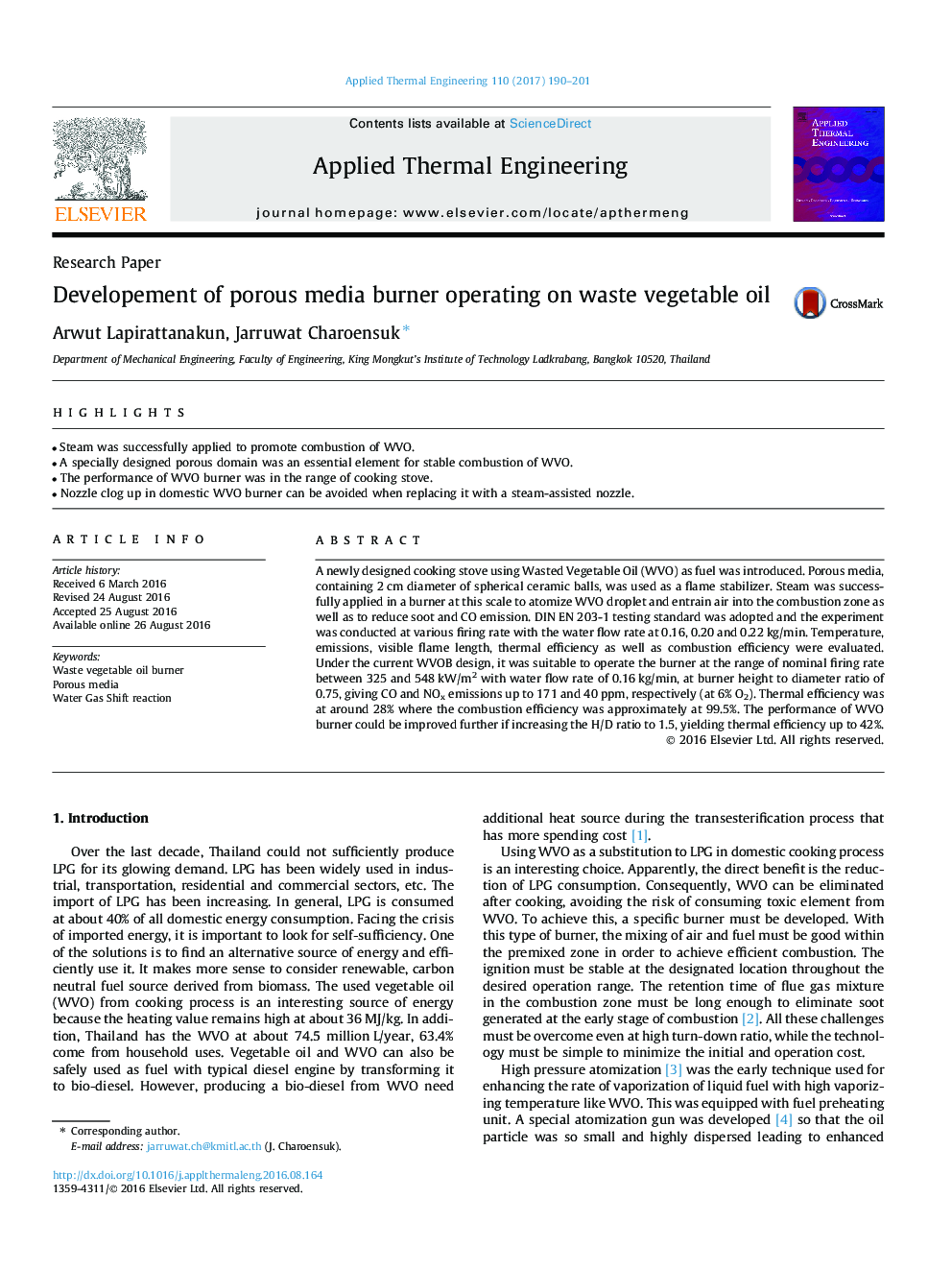| Article ID | Journal | Published Year | Pages | File Type |
|---|---|---|---|---|
| 4992007 | Applied Thermal Engineering | 2017 | 12 Pages |
Abstract
A newly designed cooking stove using Wasted Vegetable Oil (WVO) as fuel was introduced. Porous media, containing 2Â cm diameter of spherical ceramic balls, was used as a flame stabilizer. Steam was successfully applied in a burner at this scale to atomize WVO droplet and entrain air into the combustion zone as well as to reduce soot and CO emission. DIN EN 203-1 testing standard was adopted and the experiment was conducted at various firing rate with the water flow rate at 0.16, 0.20 and 0.22Â kg/min. Temperature, emissions, visible flame length, thermal efficiency as well as combustion efficiency were evaluated. Under the current WVOB design, it was suitable to operate the burner at the range of nominal firing rate between 325 and 548Â kW/m2 with water flow rate of 0.16Â kg/min, at burner height to diameter ratio of 0.75, giving CO and NOx emissions up to 171 and 40Â ppm, respectively (at 6% O2). Thermal efficiency was at around 28% where the combustion efficiency was approximately at 99.5%. The performance of WVO burner could be improved further if increasing the H/D ratio to 1.5, yielding thermal efficiency up to 42%.
Keywords
Related Topics
Physical Sciences and Engineering
Chemical Engineering
Fluid Flow and Transfer Processes
Authors
Arwut Lapirattanakun, Jarruwat Charoensuk,
